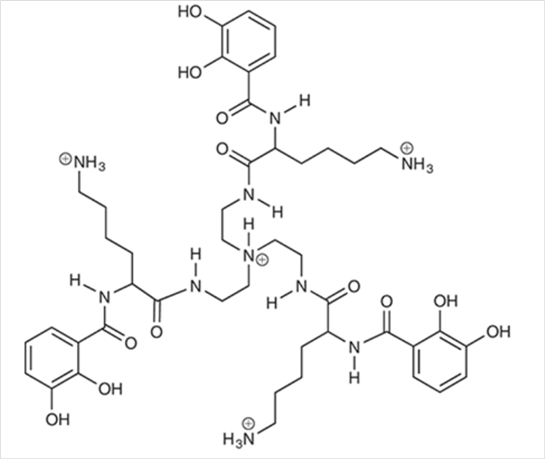
ORGANIC CHEMISTRY-STUD.SOLNS.MAN+SG(LL)
4th Edition
ISBN: 9781119659587
Author: Klein
Publisher: WILEY
expand_more
expand_more
format_list_bulleted
Question
Chapter 2.5, Problem 11PTS
Interpretation Introduction
Interpretation: All the lone pairs associated to nitrogen atoms for the following compound should be drawn.

Concept Introduction The unshared pair of electrons are said to be lone pairs of electrons that are present in an atom of a compound.
Expert Solution & Answer
Want to see the full answer?
Check out a sample textbook solution
Students have asked these similar questions
20,0
Complete the electron pushing mechanism to
y drawing the necomery unicaciones and carved on for
Step 1: Add curved arms for the tint step, traiment with NalilĻ. The Nation
458
Step 2: Added for the second step, inalment with), how the "counterion
bar
Step 3: Daw the products of the last simplom organic and one incoganic spacient, including all nonbonding
please provide the structure for this problem, thank you!
Draw the Fischer projection from the skeletal
structure shown below.
HO
OH
OH
OH
OH H
Q
Drawing
Atoms, Bonds
and Rings
Charges
I
☐
T
HO
H
H
OH
HO
I
CH2OH
H
OH
Drag
H
OH
-CH2OH
CHO
-COOH
Undo
Reset
Remove
Done
Chapter 2 Solutions
ORGANIC CHEMISTRY-STUD.SOLNS.MAN+SG(LL)
Ch. 2.1 - Prob. 1LTSCh. 2.1 - Prob. 3ATSCh. 2.2 - Prob. 2LTSCh. 2.2 - Prob. 4PTSCh. 2.2 - Prob. 6ATSCh. 2.4 - Prob. 3LTSCh. 2.4 - Prob. 9ATSCh. 2.5 - Prob. 4LTSCh. 2.5 - Prob. 11PTSCh. 2.9 - Prob. 6LTS
Ch. 2.9 - Prob. 15PTSCh. 2.9 - Prob. 16PTSCh. 2.10 - Prob. 18CCCh. 2.10 - Prob. 19CCCh. 2.10 - Prob. 20CCCh. 2.10 - Prob. 21CCCh. 2.10 - Prob. 22CCCh. 2.10 - Prob. 23CCCh. 2.10 - Prob. 24CCCh. 2.10 - Prob. 25CCCh. 2 - Prob. 34PPCh. 2 - Prob. 35PPCh. 2 - Prob. 36PPCh. 2 - Prob. 37PPCh. 2 - Prob. 38PPCh. 2 - Prob. 40PPCh. 2 - Prob. 42PPCh. 2 - Prob. 43PPCh. 2 - Prob. 44PPCh. 2 - Prob. 45PPCh. 2 - Prob. 46PPCh. 2 - Prob. 47PPCh. 2 - Prob. 48PPCh. 2 - Prob. 49PPCh. 2 - Prob. 50PPCh. 2 - Prob. 67ASP
Knowledge Booster
Similar questions
- please provide the structure for this problem, thank youarrow_forwardpresented by Morallen Lig Intermine the hand product for the given mution by adding atoms, bonds, nonhonding diarion panda скуль Step 3: Comp the draw the product Step 2: Agama workup Compithe 429 ملولةarrow_forwardReaction A 0,0arrow_forward
- presented by Morillon Leaning Predict the organic product for the min кусур HSC Adithane carved arnown to come than that to the condon slchroruis in acid in in aquishri with ноюarrow_forward6.15PM Sun Mar 30 K Draw the major product of this reaction. Include any relevant stereochemistry. Ignore inorganic byproducts. Problem 1 of O H [PhзPCH2CH3]*C|¯ NaH Drawing > Q Atoms, Bonds and Draw or tap a nearrow_forward8:17 PM Sun Mar 30 Draw the major product of this reaction. Ignore inorganic byproducts. HSCH2CH2CH2SH, BF3 Probler Drawing Ato Bonds Clarrow_forward
- Name the major organic product of the following action of 4-chloro-4-methyl-1-pentanol in neutral pollution 10+ Now the product. The product has a molecular formula f b. In a singly hain, the starting, material again converts into a secule with the molecular kormula CIO. but with comply Draw the major organic structure inhalationarrow_forwardMacmillan Learning Alcohols can be oxidized by chromic acid derivatives. One such reagent is pyridinium chlorochromate, (C,H,NH*)(CICTO3), commonly known as PCC. Draw the proposed (neutral) intermediate and the organic product in the oxidation of 1-butanol by PCC when carried out in an anhydrous solvent such as CH₂C₁₂. PCC Intermediate OH CH2Cl2 Draw the intermediate. Select Draw Templates More с H Cr о Product Draw the product. Erase Select Draw Templates More H о Erasearrow_forwardIf I have 1-bromopropene, to obtain compound A, I have to add NaOH and another compound. Indicate which compound that would be. A C6H5 CH3arrow_forward
arrow_back_ios
SEE MORE QUESTIONS
arrow_forward_ios
Recommended textbooks for you
 Chemistry: Principles and PracticeChemistryISBN:9780534420123Author:Daniel L. Reger, Scott R. Goode, David W. Ball, Edward MercerPublisher:Cengage Learning
Chemistry: Principles and PracticeChemistryISBN:9780534420123Author:Daniel L. Reger, Scott R. Goode, David W. Ball, Edward MercerPublisher:Cengage Learning Chemistry: The Molecular ScienceChemistryISBN:9781285199047Author:John W. Moore, Conrad L. StanitskiPublisher:Cengage Learning
Chemistry: The Molecular ScienceChemistryISBN:9781285199047Author:John W. Moore, Conrad L. StanitskiPublisher:Cengage Learning
 ChemistryChemistryISBN:9781305957404Author:Steven S. Zumdahl, Susan A. Zumdahl, Donald J. DeCostePublisher:Cengage Learning
ChemistryChemistryISBN:9781305957404Author:Steven S. Zumdahl, Susan A. Zumdahl, Donald J. DeCostePublisher:Cengage Learning Chemistry: An Atoms First ApproachChemistryISBN:9781305079243Author:Steven S. Zumdahl, Susan A. ZumdahlPublisher:Cengage Learning
Chemistry: An Atoms First ApproachChemistryISBN:9781305079243Author:Steven S. Zumdahl, Susan A. ZumdahlPublisher:Cengage Learning World of Chemistry, 3rd editionChemistryISBN:9781133109655Author:Steven S. Zumdahl, Susan L. Zumdahl, Donald J. DeCostePublisher:Brooks / Cole / Cengage Learning
World of Chemistry, 3rd editionChemistryISBN:9781133109655Author:Steven S. Zumdahl, Susan L. Zumdahl, Donald J. DeCostePublisher:Brooks / Cole / Cengage Learning

Chemistry: Principles and Practice
Chemistry
ISBN:9780534420123
Author:Daniel L. Reger, Scott R. Goode, David W. Ball, Edward Mercer
Publisher:Cengage Learning

Chemistry: The Molecular Science
Chemistry
ISBN:9781285199047
Author:John W. Moore, Conrad L. Stanitski
Publisher:Cengage Learning


Chemistry
Chemistry
ISBN:9781305957404
Author:Steven S. Zumdahl, Susan A. Zumdahl, Donald J. DeCoste
Publisher:Cengage Learning

Chemistry: An Atoms First Approach
Chemistry
ISBN:9781305079243
Author:Steven S. Zumdahl, Susan A. Zumdahl
Publisher:Cengage Learning

World of Chemistry, 3rd edition
Chemistry
ISBN:9781133109655
Author:Steven S. Zumdahl, Susan L. Zumdahl, Donald J. DeCoste
Publisher:Brooks / Cole / Cengage Learning